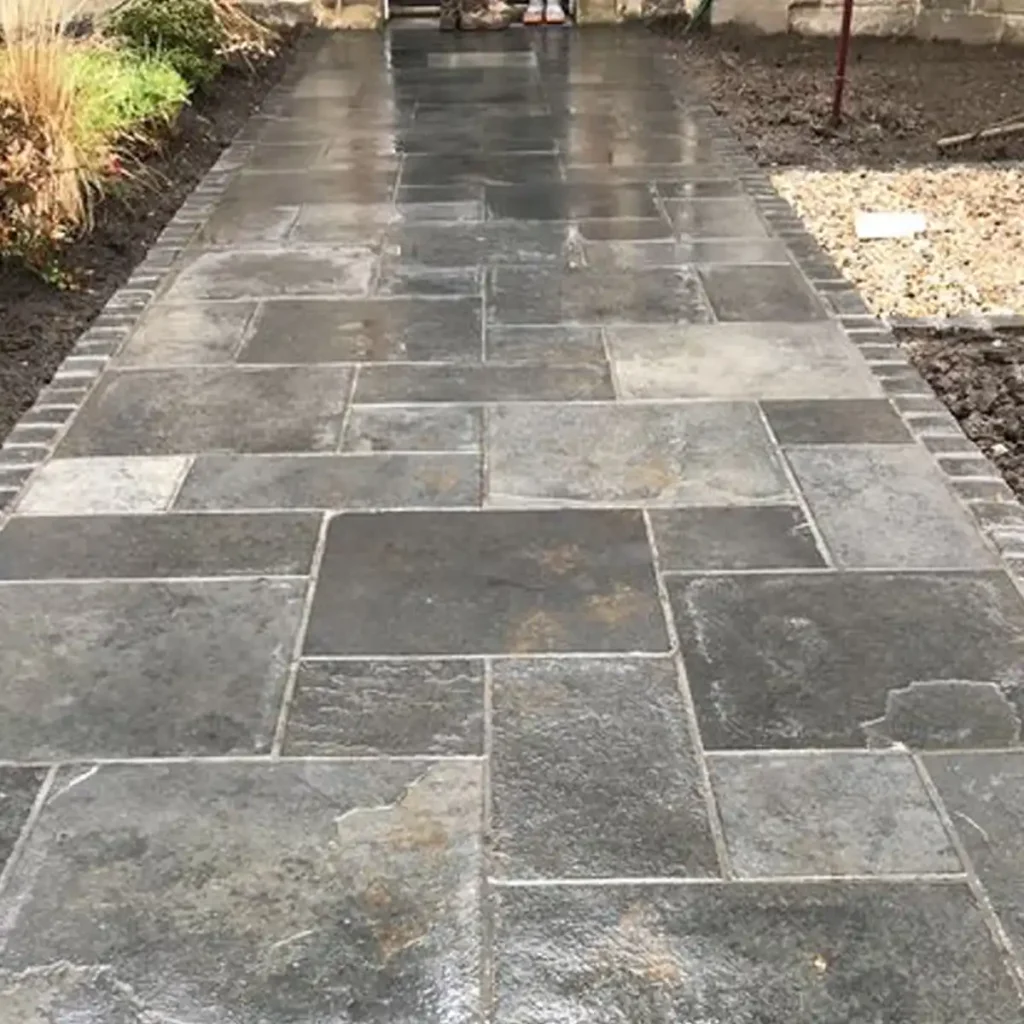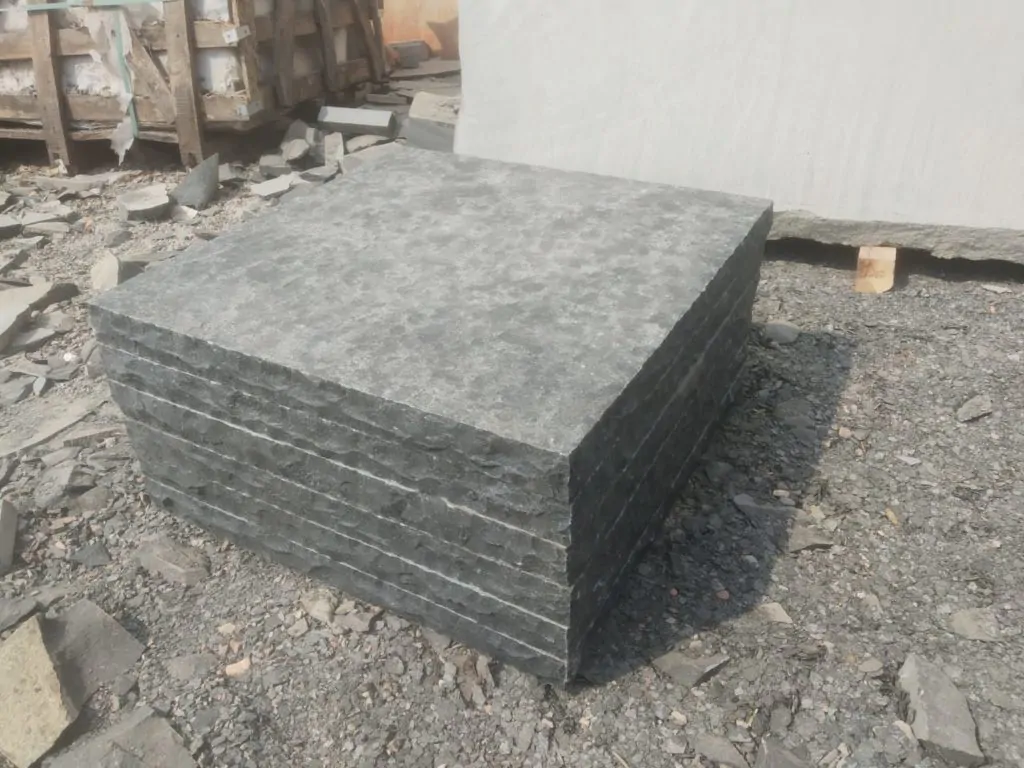Basalt is an extrusive igneous or volcanic rock with a low silica concentration, a dark color, and a high iron and magnesium content. Basalt is the most prevalent rock on the earth’s surface and is mostly made of pyroxene, olivine, and plagioclase. Basalt rocks have a coarse porous texture due to the pores caused by gas bubbles. These rocks’ specimens are usually fine-grained, glassy, and compact. Black Basalt rocks make up a major portion of the ocean floor. Volcanoes erupting in ocean basins can result in the development of volcanic islands.

The Presence of Basalt
Basalt underpins more of the Earth’s surface than any other variety of rock. Basalt underpins the majority of the Earth’s ocean basins. Although basalt is less frequent on continents, lava flows and flood basalts underpin a significant portion of the Earth’s terrestrial surface. Basalt is considered a highly significant rock. Basalt is an igneous rock created by the rapid cooling of magnesium and iron-rich lava exposed at or near the surface of a terrestrial planet or the moon.
The Formation of Basalt
Basalt rocks are often generated when volcanic basaltic lava, equal to plutonic gabbro-norite magma, quickly cools from the deep interior of the Earth’s crust and is exposed to the Earth’s surface. The basalt lows lack gas cavities, and the floors are often fairly thick and widespread.
At Oceanic sites
The majority of Earth’s basalt can be found near the tectonic plate borders in the ocean, which create a worldwide ridge system in the center of the ocean. Convection currents in the mantle transport hot molten lava to the Earth’s crust via seafloor eruptions, resulting in huge landscapes of pillow-shaped basalt after cooling. However, because these events take place distant from human observation/view, seismic data are the only technique to monitor such basalt flow.
Hotspots in the ocean
Oceanic hotspots are known to create massive volumes of basalt by a mechanism similar to the one described above. Any magma flow can rupture at any time, and continuous lava flow in such areas can progressively build to form an island.
Volcanic activity on the earth
Black basalt (a kind of basalt) is created inland, mostly from enormous vents and fissures that deposit vast volumes of basaltic lava to the Earth’s surface. These eruptions last for a long time and eventually result in vertical stacks or columns.
Basalt Rock Cycle
The basalt rock cycle is a process that commences over a time-a period of millions of years. All the basaltic magma is pulled out of the mantle to the Earth’s crust because convection currents are continually pushed away from the fissures because of the new magma flow. Finally, over a period of millions of years, the older basalt crust slowly sinks back into the magma, ending its cycle where it began or started its formations.

Basalt Properties
Hardness
Rock hardness is often evaluated to assess compressive fracture strength, which determines whether a rock is soft or hard. Basalt has a Mohs hardness of 6 and may be determined by combining its compressive strength and hardness. The compressive strength is typically 100-300 Mpa or Megapascal. Basalt rocks have tensile strengths of 10-30 Mpa and shear strengths of 20-60 Mpa, indicating that depending on the mineral makeup, they are strong to very strong. The quality of rock hardness is frequent in the densest, fine-grained textured rocks, such as basalt.
Density
The density of basalt is extraordinarily high, as seen by the combination of the rock’s porosity, i.e., 0.1 – 1%, and its bulk density, 2.8 – 3 Mg aka megagram per metre cube; this is due to the fact that around 50% of basalt is composed of silica.
Black Basalt rocks are mostly made up of pyroxene, olivine, and plagioclase, and they are high in magnesium and iron. Augite and olivine are the most porphyritic minerals found in basalt rocks. Basaltic lavas are pumiceous and spongy in texture.
Black Basalt Applications

Basalt Slabs and Tiles
Basalt tiles are prepared from stone blocks and come with treated surfaces and sawn sides that are appropriately even and shaped. However, one may find slight variations in the original color. Due to their amazing strength, basalt tiles work best for driveways and walkways. These tiles can also be used with other natural stones to develop contrasting color stones.
Basalt Kerbs
Basalt kerbs are constructed from stone pieces. Hammering sawn sides with bevels is the primary technique, but alternative finishes are also available. Mechanical splitting can also be used to create basalt kerbs, which are then finished with severing or rifling. Kerbs can be made with various curvature radii or with cuts (vents) for water drainage. Kerbs are utilized for the construction of pavements, flower beds, and the delimitation of paved areas when set vertically. While utilized as risers to link different walking surfaces along stairways, the attractive outcome is supplemented by the modern functional importance that aids eyesight when changing levels, with significant advantages for walkers.

Paving Blocks
Basalt paving blocks are used to enclose and delimit pavement and flower beds; they are also extensively utilised as a particular material for paving that requires high strength properties in addition to aesthetics.
